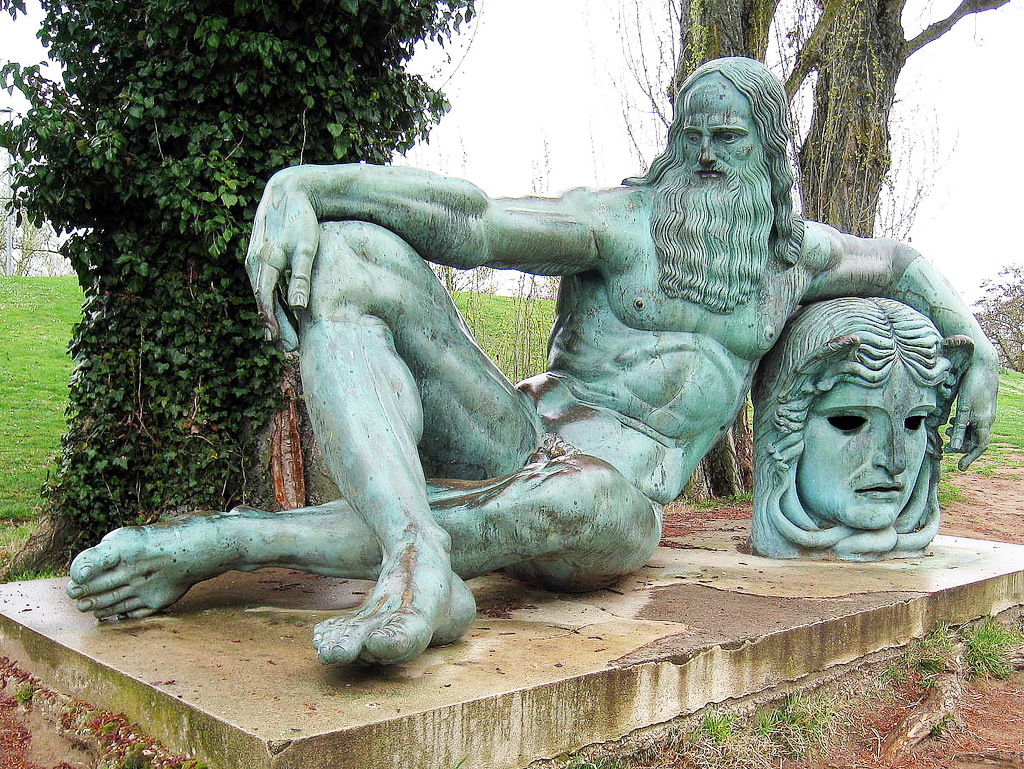Monuments to the Master
This is the final feature of the Italian Tribune’s tribute to Leonardo. As is fitting, it is appropriate to describe the monuments around the globe devoted to the great master.
The statue of Leonardo da Vinci located in Piazza della Scala, Milan is prominently displayed in front of the temple to Bel Canto. The monument offers a solemn and austere image of the scientist. At his feet are four of his pupils. The statue is made of white Carrara marble, while granite from Baveno was used for the base.
The idea of building a statue in honor of the Tuscan genius was initiated in 1856 by the Accademia di Belle Arti in Brera, which held a competition for a monument. The statue was originally to be placed in the Palazzo in Brera. Two years later, after considering all of the sketches received in the competition, the jury chose the one presented by the artist Pietro Magni. It was subsequently decided to place the monument in Piazza della Scala, since renovation to the area (which included construction of the famed Galleria) had just been completed. In 1872 the monument was inaugurated in the presence of King Vittorio Emanuele II at the Second National Exhibition.
In Florence, a life-sized marble statue of Leonardo da Vinci was created by Luigi Pampaloni and was funded by what is described as “a public subscription program that began in 1834.” The niches beneath the porticos of the Uffizi Gallery were originally designed by Vasari purely as architectural features, but by the first half of the 19th century they became occupied by 28 statues of people from the world of politics, art, literature, science, the judiciary and religion. It was originally intended to have enlist 4,000 Florentines to each pay one florin each month, for 30 months to pay for 28 statues. That idea went nowhere, so instead a winner-take-all lottery was devised and the funding was soon secured.
Some of the other statues include Michelangelo Buonarroti, Galileo Galilei, Donatello, Dante Alighieri, Amerigo Vespucci, the Medicis Lorenzo Il Magnifico and Cosimo The Elder, Nicoló Machiavelli and Francesco Petrarca.
Unveiled on August 19th, 1960, a giant statue of Leonardo da Vinci at Rome’s Fiumicino-Leonardo da Vinci Airport has greeted visitors ever since. Millions upon millions of people have passed it during the decades, but it was not until 2006 that a secret hidden inside the statue was discovered.
The monumental bronze statue with a marble base is the work of Bulgarian artist Assen Peikov, who expatriated to Italy during World War II. When the city of Rome announced a competition for a work of art to be installed at Fiumicino Airport, Peikov won and the resulting 60-foot statue of the Renaissance giant holding his famous “aerial screw” design would become the sculptor’s largest and best-known work.
In 2006, the statue needed renovation. During the course of this work, one of the workers made a strange discovery: a small hatch, located at a height of about 30 feet, approximately in the middle of the statue. The hatch was carefully opened and inside were found two parchments, still in perfect condition.
One of the parchments of this time capsule was written in classical Latin. It told of the history of the area where the airport now stands, going back to ancient times and including descriptions of the landscape that predated human development. The other parchment provided a list of the people who attended the unveiling, mentioning (among others) Giovanni Gronchi (President of the Italian Republic in 1960) and Giulio Andreotti (Minister of Defense in 1960 who would go on to become Prime Minister). It is assumed that the hatch and parchments were the work of Peikov, but whether that is true remains unknown. He passed away in 1973.
Even though the secret of the statue is not widely known, sometimes people can be seen looking the statue up and down with binoculars, much to the amusement of passersby unaware that these peculiar characters are trying to spot the mysterious hatch.
In the town where Leonardo spent his final year is a bronze statue of the master portrayed as Perseus on the Ile d’or, opposite the Château d’Amboise. The statue is by the Italian sculptor Amleto Cataldi (1882-1930) and was presented to the French government by the Republic of San Marino in 1935. It represents Leonardo as a “Greek god,” although why the subject of Perseus and Medusa was chosen is anyone’s guess. The sculpture was originally installed in Paris. It was moved to its present location in 1976, yet for some reason, it was left unidentified, without a plaque or marker until December, 2011. The sculpture rests on a concrete platform near the river bank on the Ile d’Or, a small island in the Loire at Amboise.





